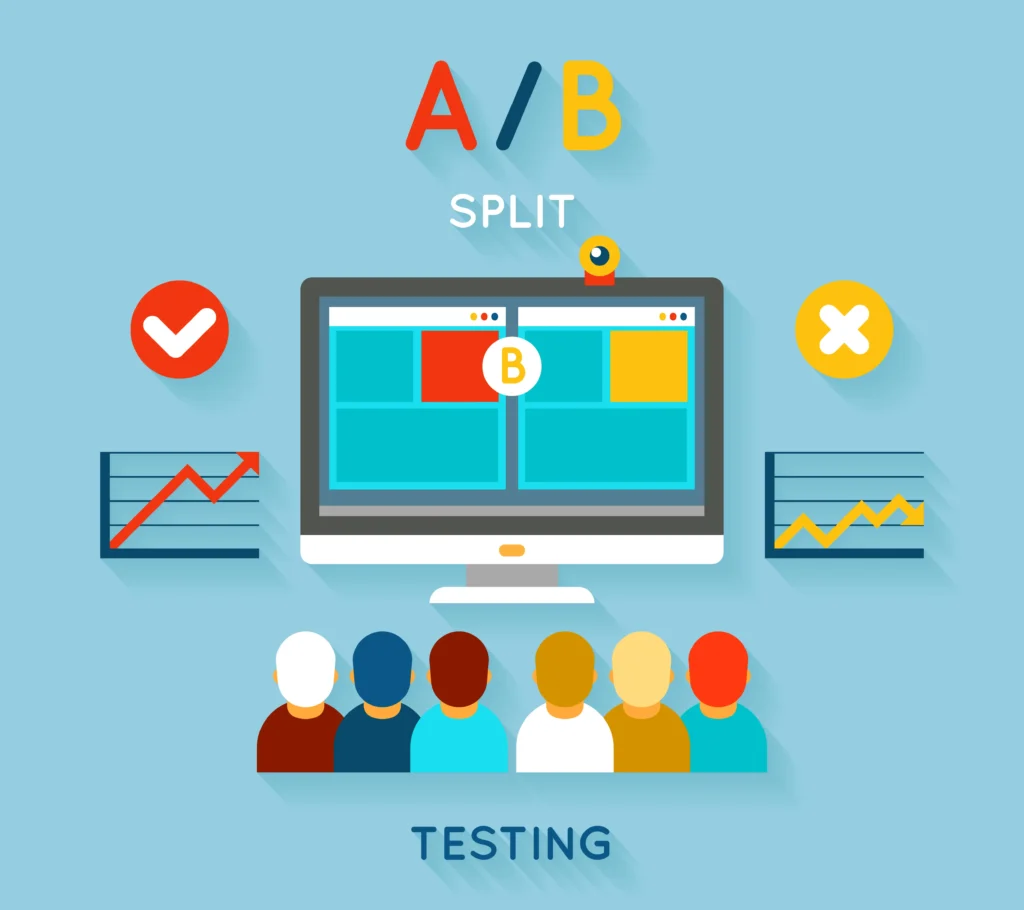Good Landing Page Experience
A landing page is not just a digital doorway. it’s the first handshake, the opening line, the eye-catching display that either draws you in or sends you packing. But what makes a landing page stand out from the crowd?
What ensures that your audience not only stays but takes the action you desire?
Let’s dive into the key attributes that define a good landing page experience and how you can harness them to create a digital experience that resonates deeply with your visitors.
The Key Attributes of a Good Landing Page Experience
Clear and Compelling Headline
Your headline is the first thing visitors see, and it should instantly convey the essence of your offer. A compelling headline grabs attention, sparks interest, and encourages the visitor to read further.
Think of it as the hook in a catchy song, without it, your audience might just tune out.
- The Role of the Headline: It’s the gateway to your content, setting the tone and expectation.
- Tips for Crafting an Effective Headline: Keep it concise, make it relevant, and highlight the benefits. For instance, “Unlock Your Potential with Our Free E-book” is far more enticing than “Download Our E-book.”
Engaging Visual Design
First impressions are visual. If your landing page doesn’t look appealing, visitors might leave before reading a single word. An engaging design captures attention and keeps visitors interested.
- First Impressions Matter: A visually appealing page fosters trust and makes users feel comfortable.
- Elements of Attractive Design: Use high-quality images, consistent color schemes, and a clean, uncluttered layout. Balance text with visuals to keep the page aesthetically pleasing.
User-Friendly Layout
A simple, intuitive layout ensures that visitors can easily find what they’re looking for. If your landing page is too complicated or cluttered, users will get frustrated and leave.

- Importance of Simplicity: A clean design with ample white space helps focus attention on key elements.
- Designing for Easy Navigation: Use clear headings, bullet points, and short paragraphs to guide the user through the content smoothly.
Fast Loading Speed
In the age of instant gratification, nobody likes to wait. A slow-loading landing page can be a deal-breaker, causing potential customers to bounce before they even see your offer.

- Impact of Speed on User Experience: Faster pages reduce bounce rates and improve overall user satisfaction.
- Techniques to Improve Loading Times: Optimize images, leverage browser caching, and minimize the use of heavy scripts.
Responsive Design
With users accessing websites from a multitude of devices, your landing page must look and function well on all screen sizes.
- Mobile vs. Desktop Experience: Ensure your page is mobile-friendly, as a significant portion of web traffic comes from smartphones and tablets.
- Ensuring Cross-Device Compatibility: Test your page on various devices and browsers to ensure a consistent experience.
Relevant and High-Quality Content
Content is king, but only if it’s relevant and engaging. Your landing page should provide valuable information that addresses the needs and questions of your audience.
- Importance of Matching User Intent: Understand what your visitors are looking for and tailor your content to meet those needs.
- Tips for Writing Engaging Content: Use clear, concise language, incorporate keywords naturally, and focus on benefits rather than features.
Effective Call-to-Action (CTA)
A CTA is the driving force behind conversions. It’s the element that prompts your visitors to take the next step, whether it’s signing up, downloading, or making a purchase.

- What Makes a CTA Effective? It should be clear, compelling, and action oriented. Phrases like “Get Started Now” or “Claim Your Free Trial” are direct and motivating.
- Placement and Design of CTAs: Position your CTA prominently and make it stand out with contrasting colors and enticing text.
Trust Signals
Building trust is crucial, especially if you’re asking for personal information or a purchase. Trust signals reassure visitors that your offer is legitimate and valuable.

- Building Trust with Your Audience: Use testimonials, reviews, security badges, and professional affiliations to build credibility.
- Examples of Trust Signals: Displaying customer testimonials, showcasing media mentions, and providing a money-back guarantee.
SEO Optimization
An optimized landing page not only improves visibility but also ensures that you’re attracting the right audience. Good SEO practices help your page rank higher in search engine results.
- Importance of SEO for Landing Pages: Higher rankings lead to more traffic and potential conversions.
- Basic SEO Best Practices: Use relevant keywords, optimize meta tags, and ensure your page is easily crawlable by search engines.
A/B Testing
Continuous improvement is key to maintaining an effective landing page. A/B testing allows you to compare different versions of your page to see which performs better.

- The Role of A/B Testing: Helps identify what works best in terms of design, content, and CTAs.
- What to Test and How: Experiment with headlines, images, CTA placement, and color schemes to optimize performance.
Creating an Emotional Connection
Understanding your audience on an emotional level can make your landing page more effective. When visitors feel understood and valued, they are more likely to engage and convert.
Understanding Your Audience
To create content that resonates, you need to know who your audience is and what they care about. Conduct surveys, analyze feedback, and create detailed buyer personas.
Personalizing the User Experience
Personalization can significantly enhance the user experience. Use data to tailor your content and offers to individual preferences and behaviors.
Storytelling on Your Landing Page
Stories are powerful tools for engagement. Incorporate storytelling to connect with your audience on a deeper level, making your message more memorable and impactful.
Conclusion
Creating a good landing page is both an art and a science. By focusing on key attributes such as clear headlines, engaging design, user-friendly layout, fast loading speeds, and relevant content, you can create an experience that not only captures attention but also drives action.
Remember to continuously test and optimize your page to ensure it meets the evolving needs of your audience.
FAQs – Good Landing Page Experience
What is the primary goal of a landing page?
The primary goal of a landing page is to convert visitors into leads or customers by prompting them to take a specific action, such as filling out a form, making a purchase, or subscribing to a newsletter.
How often should I update my landing page?
Regular updates are essential to keep your landing page relevant and effective. Consider reviewing and updating your landing page every few months or whenever you launch a new campaign.
Can I have multiple CTAs on a landing page?
While it’s possible to have multiple CTAs, it’s usually best to focus on one primary action to avoid confusing visitors. If you do use multiple CTAs, ensure they are clearly distinguished and serve different purposes.
How do I measure the success of my landing page?
Success can be measured through various metrics, such as conversion rates, bounce rates, time on page, and user engagement. Tools like Google Analytics can provide valuable insights into your landing page’s performance.
What tools can I use for A/B testing?
There are several tools available for A/B testing, including Google Optimize, Optimizely, and VWO. These tools allow you to create and test different versions of your landing page to determine which performs best.

